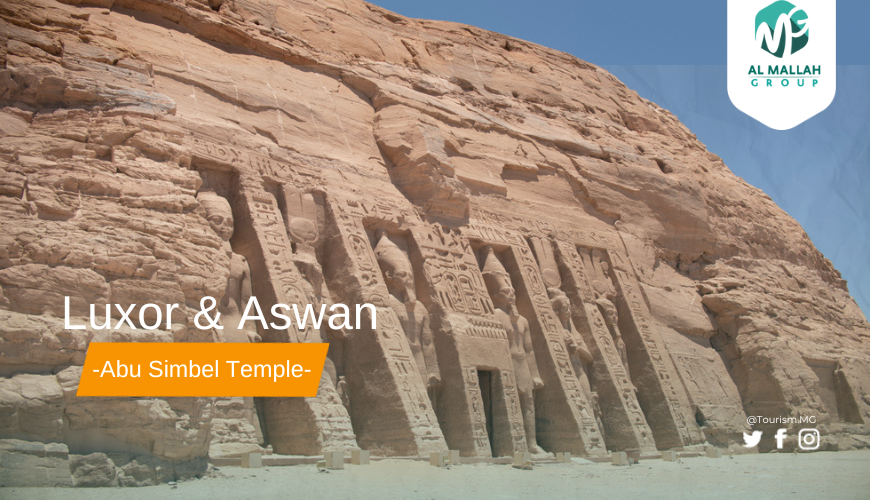Deep in the southern desert of Egypt, amidst its lands lies an important historical gem, the Abu Simbel Temple. It stands as one of the most prominent archaeological landmarks bearing witness to the greatness of ancient Egyptian civilization. Situated on the banks of Lake Nasser, the temple is designed in a way that allows sunlight to penetrate and illuminate its inner sanctuary twice a year, on February 22nd and October 22nd. The temple holds historical significance as it was built in the 13th century BCE by Ramesses II.
As you pass through the temple's gateway, towering 20 meters high, you are greeted by colossal statues of Pharaoh Ramesses II. These towering statues, reaching a height of twenty meters, captivate attention, expressing the power, authority, and greatness of the pharaoh. The temple's walls are adorned with artifacts and inscriptions that narrate profound stories about the lives of the pharaohs, their worship, and religious traditions.
The warm rays of the sun add a special charm to the temple's corridors, making you feel as if you are living in the time of the ancient pharaohs. You can envision the lives of ancient people, their religious rituals, and celebratory ceremonies as they wander through the corridors of this magnificent structure.
For each visitor to the temple, there are unique sensations and experiences. Some are amazed and impressed by the grandeur of the temple and the splendor of its statues, while others are engulfed in contemplation and tranquility as they stroll among its ancient walls.
Remember, a visit to Abu Simbel Temple is an unforgettable adventure. It is not just an archaeological site but a window that opens onto an ancient world full of secrets, myths, and rich history.


